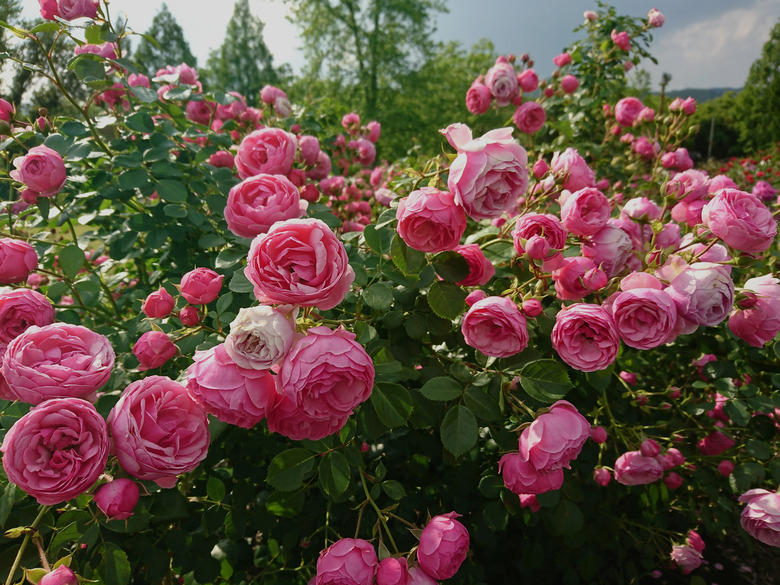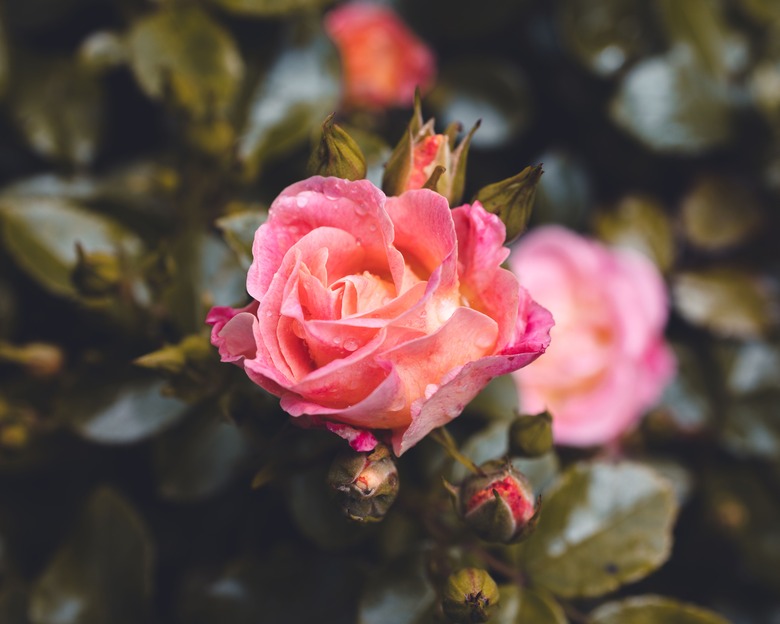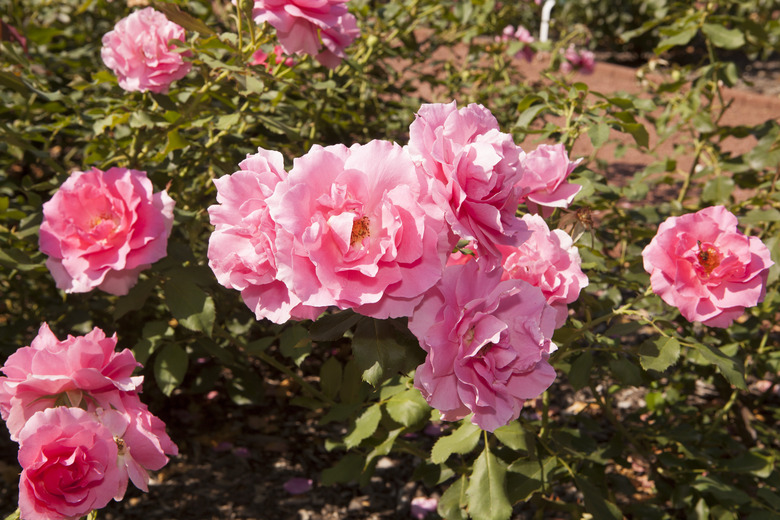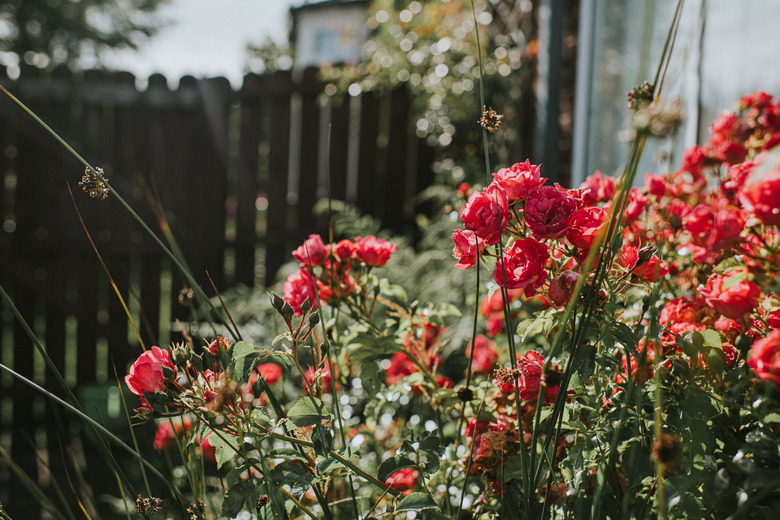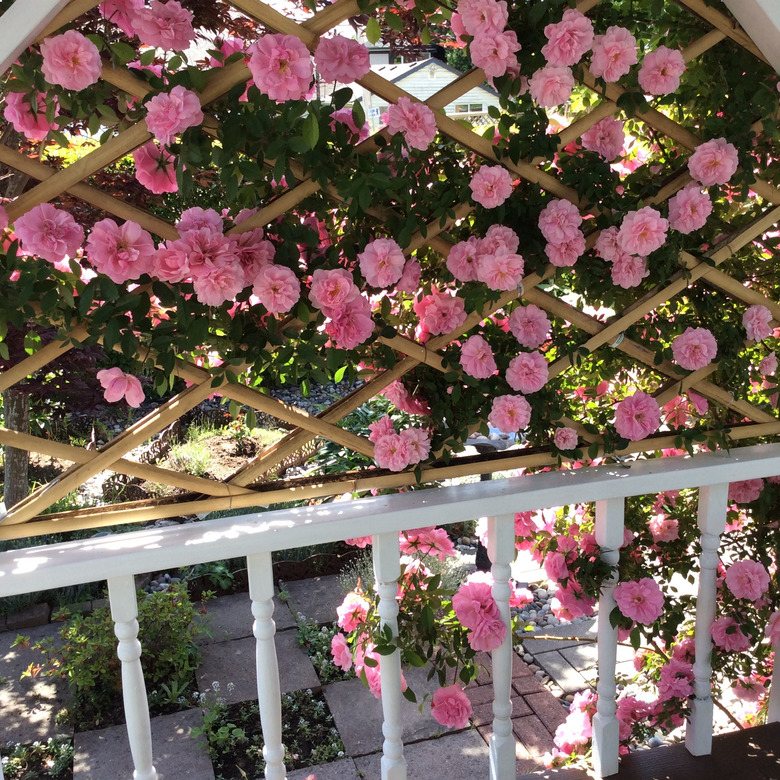Roses Are Notoriously Finicky — Here's How To Prune Without Killing Them
We may receive a commission on purchases made from links.
Some plants grow and thrive without gardener assistance, but roses are not among them. These beloved flowering plants are extremely beautiful but also have a reputation for being needy. While some are needier than others in terms of regular maintenance and cultural care, pruning is almost always a requirement for proper rose care. Pruning roses promotes new growth and flowering, helps maintain plant health, and can encourage repeat blooming. Underpruning is the most common cause of an unproductive rose.
When and how to prune roses depends entirely on the type of roses in the garden. The most common varieties fall into one of four broad categories: hybrid tea and grandiflora, floribunda and polyantha, shrub roses, and climbing roses.
Basic First Steps for Pruning Roses
Basic First Steps for Pruning Roses
Although each category of rose has specific pruning requirements, some techniques are the same for all roses. The rose pruning equipment required, for example, is the same. Given the thorns, botanically called prickles, on some roses, it's a good idea to put on leather gloves to protect your hands.
In order to start proper pruning for roses of any kind, you will need sharp, clean pruning equipment, including bypass pruning shears; long-handled loppers or lopping shears; and a pruning saw for any large, heavy old stems. Dip the pruning equipment you are using into a 70 percent alcohol solution from time to time to avoid spreading diseases.
The first few steps in pruning roses are uniform across rose species. They involve cleanup work.
- Clean all dead leaves from the plant and from the ground. This is important to prevent the plant from getting fungal diseases that proliferate in plant debris and other detritus on the ground around plants. Fungal pathogens will even overwinter in plant debris during the coldest weather to infect plants the following growing season when spring rains splash water from the ground onto plants, carrying the pathogens with them.
- Prune out all dead, damaged, or diseased stems. Entirely remove all dying or dead canes. Check the center of the canes as you prune to identify diseased stems. If the core of a cane is brown and withered, the stem is diseased.
- If a stem is damaged, remove part of the branch, making the
cut at a 45-degree angle
several inches into healthy wood. - Prune out crossing stems by removing the weakest cane, making the cut just above ground level. Where cane borers are an issue, seal the ends of
the cuts to prevent the entry of cane borers. - Prune shoots from the rootstock ("suckers") of grafted plants whenever they appear. They produce neither attractive flowers nor growth.
Pruning Hybrid Tea and Grandiflora Roses
Pruning Hybrid Tea and Grandiflora Roses
Hybrid tea roses are the most popular type, offering one exquisite blossom with 30 to 50 petals topping each tall stem. Grandiflora roses are also long-stemmed but have blooms that appear in clusters rather than individually on the stems. Both bloom in six- to seven-week cycles. Follow these step-by-step pruning instructions for these gardener favorites:
- In the spring, prune out all weak canes, leaving five of the healthiest and most vigorous canes. These will be the framework branches, so they should be evenly spaced, upright and radiating away from the center.
- Prune these canes down to 15 to 18 inches above ground level. Make each cut about a quarter-inch above an outward-facing bud eye.
- Deadhead hybrid tea roses and grandifloras when flowers are spent to encourage quick rebloom. Make the snip below the wilted flower but above the highest healthy bud.
- If you live in an area with strong winter winds, prune back the roses in late fall. Take off about one-third of their height to prevent cane breakage.
Need to see this process visually? Watch this video on hybrid tea rose pruning from the UC Master Gardener program:
Pruning Floribunda and Polyantha Roses
Pruning Floribunda and Polyantha Roses
Floribunda comes next in the popularity polls right after hybrid teas and grandifloras. This rose looks like a grandiflora, with tall stems and flowers in generous clusters, but it blooms continually. Polyantha roses are like floribundas in a smaller size; their stems are shorter and their flowers smaller. Generally, these varieties of roses are not pruned severely but only to control the size, vase shape, and health of the plants.
-
In spring, just as the buds start to swell, use your pruners on the interior lateral canes to promote air circulation, removing weak canes.
-
Cut out the center branch from each cluster of branches.
-
Prune back the remaining branches just above a bud, leaving three or four undeveloped growth buds, cutting out about one-fourth of the current year's growth.
-
Deadhead floribundas and polyanthas when the flowers are wilted to
encourage quick rebloom. Make the cut below the wilted flower but above
the highest healthy bud.
Pruning Shrub Roses
Pruning Shrub Roses
Shrub roses belong to a nonspecific class of wild species and their cultivars. These roses develop tall, dense growth and require little maintenance. Many shrub roses have fine-textured foliage and are suitable for hedging or screens. They are tougher than other roses and need less pruning and maintenance. Shaping is rarely necessary, and heavy pruning can destroy the plant's attractive natural shape.
Here's how to prune shrub roses:
- Prune out the older,
less productive stems. - Trim off up to one-third of the total plant as needed.
Need to see this visually? Check out this video from the National Trust on pruning shrub roses:
Pruning Climbing Roses
Pruning Climbing Roses
Climbing roses, despite their common name, do not climb on their own. They must be attached to a support to rise.
Climbing roses grow differently than other types of rose plants. The blossoms on your climbing roses appear on the side branches, so you need to train the main canes to a horizontal position by attaching them to a structure. Canes that grow straight up only produce flowers at the ends of the canes.
Some climbing roses, including ramblers, can flower throughout the year, but others bloom only once. The two should be pruned differently.
Ever-blooming climbers and large-flowered climbers that flower throughout the year need little if any pruning for two to three years after planting. Only remove dead wood and spent flowers. After that:
- Prune in spring while they are still dormant to remove old, unproductive canes.
- The rose bush should now present as a long main cane trained
into a horizontal position with numerous lateral branches that all
point up or vertically. Remove any lateral branches that point down or out instead of up. - Cut back lateral branches to two to three strong buds.
Prune ramblers and large-flowered climbers that bloom only once immediately after flowering since blooms form on previous seasons' growth. Completely remove canes that bore flowers. New canes grow in as side branches of older canes and will produce flowers the following year, so these should be trained in the place of the removed canes.
